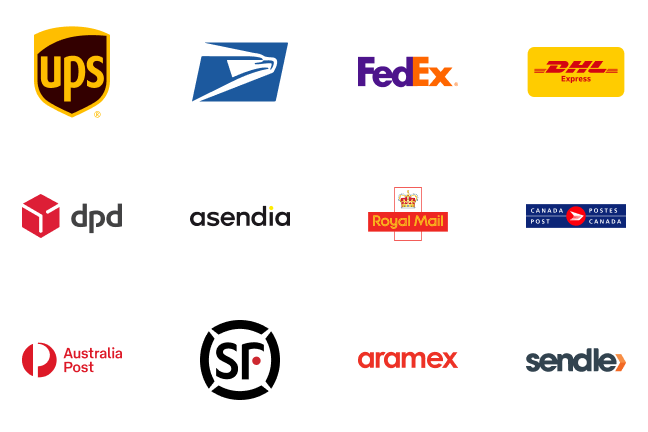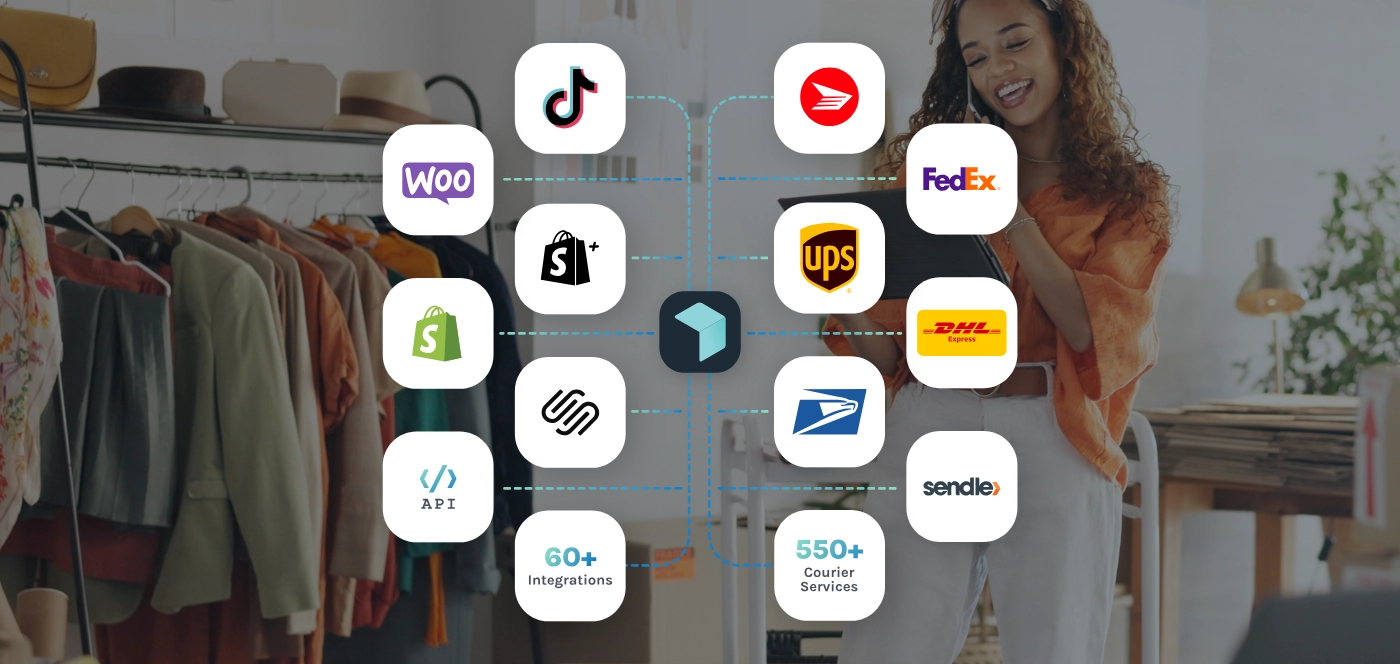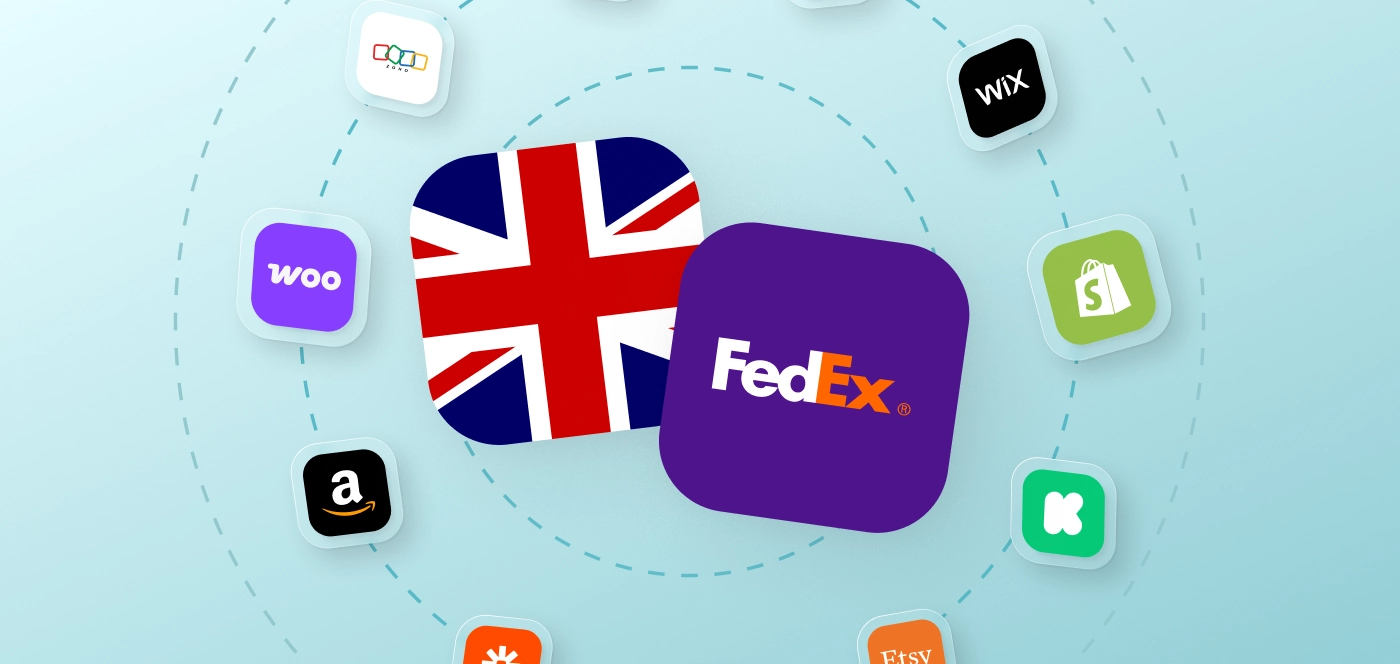On July 27, 2025, the United States and European Union reached a colossal deal that reshapes trade relations between the two sides. This new trade deal, announced by President Donald Trump and European Commission President Ursula von der Leyen, introduces a fresh tariff structure, impacts sectoral tariffs, and aims to reduce the goods trade deficit.
Whether you're a U.S.-based Shopify store importing European imports or a WooCommerce seller shipping internationally, this agreement affects how you manage shipping, sourcing, and pricing. Here's what eCommerce businesses need to know.
What Is the EU Tariff Deal?
The newly signed EU tariff deal includes a 15% baseline tariff on most goods exported from the EU to the U.S. The White House framed it as a step toward economic security and balancing trade.
This replaces previous zero tariffs on categories like pharmaceuticals under WTO rules. Also, Over 70% of European exports—valued at more than €380 billion annually—are now affected. The move marks a change from the decades-old norm of free trade on high-priority sectors.
A small business exporting eco-friendly cosmetics from Europe to the U.S. will now need to factor in these higher tariffs, potentially altering pricing and competitiveness. In this situation, making use of Easyship’s automatic tax and duties calculator could significantly help businesses by ensuring efficiency during a time of turbulence.
Key Drivers Behind the US-EU Trade Agreement
The Trump administration pushed for the new tariff structure after raising concerns about the large trade imbalance between the two sides. The U.S. faced a goods trade deficit of $218 billion with the EU in 2024.
The situation escalated when President Trump announced on April 2—a date he dubbed "Liberation Day"—that higher tariffs would be imposed if a better deal wasn’t reached. The threatened 30% levy forced EU officials into action.
Avoiding a full-blown trade war, the EU returned to the table with compromises that included massive investments, increased imports of U.S. energy and agricultural products, and support for national security cooperation.
Who Benefits Most From the EU Tariff Deal?
The U.S. secured favorable terms. Many experts argue the deal disproportionately benefits American exporters while increasing the EU's dependence on U.S. natural resources and military equipment.
The EU committed to $750 billion in energy imports and $600 billion in future investments into the U.S. economy over the next three years. Compared to Japan’s recent deal promising $550 billion, President Donald Trump hailed this as a better outcome.
For a French wine business using Squarespace, the new tariffs could turn this into a bad deal, raising costs and squeezing margins.
What Are the New EU Tariffs and Exemptions?
The updated tariff structure impacts core sectors like cars, chemicals, car parts, and auto parts, while maintaining legacy tariffs on steel.
| Product Category |
Previous Tariff |
New Tariff |
| Industrial Goods |
Varies |
15% |
| Cars & Auto Parts |
27.5% |
15% |
| Pharmaceuticals |
0% |
Up to 15%* |
| Aircraft & Parts |
0% |
0% |
| Steel & Aluminum |
50% |
50% |
* Still under discussion.
Tariff exemptions remain in place for pharmaceuticals, some certain chemicals, and aircraft parts, with negotiations still in progress. eCommerce companies relying on imports from the EU should monitor product-level classification updates.
Avoid Transshipment Pitfalls
If customs determines that your goods were rerouted through a third country to avoid tariffs, they may apply a 40% penalty tariff, along with fines and no option for appeal.
Note:
The 15% tariff is not flat for all goods. It applies as a minimum combined rate. If a product from the EU already had a U.S. tariff of 8%, an additional 7% is added to reach the 15% total. But if the existing tariff was already 15% or more, no new duty is added.
Non-Tariff Barriers and Sector-Specific Negotiations
Beyond the headline tariffs, the European Commission and U.S. officials are also working through non-tariff barriers, which are equally important for exporters.
- Wine and spirits, especially from France, Spain, and Germany, are still under review.
- Agricultural products that do not meet EU compliance rules are being excluded or delayed.
- New quotas are being added for pet food, processed fish, and bison meat.
Note:
Specific Harmonized Tariff Schedule (HTSUS) codes used to classify goods are being retired and replaced with new trading-partner-specific categories. If you use automated customs or freight software, verify that your classification codes are up to date. You can use Easyship’s HS code lookup tool to check the tariffs for your product.
Digital Trade and Rules of Origin Under the New Agreement
The agreement also focuses on digital and intangible goods:
- No customs duties on digital exports
- The EU and U.S. will not apply network usage fees
- Rules of origin were introduced to stop third-party countries from abusing the system
For a Wix-based eBook seller or software startup, this opens up new business opportunities without additional costs.
What About the EU Retaliatory Tariff Plan?
While the U.S. has imposed a 15% minimum tariff on most European imports, European officials have warned that a formal EU retaliatory tariff plan may be considered if negotiations stall or enforcement is deemed one-sided.
What is the EU considering?
- The European Commission has hinted at sector-specific countermeasures, including proposed duties on U.S. agricultural exports, tech components, and luxury consumer goods.
- Member states such as France and Spain have been vocal in calling for immediate reciprocity to protect domestic industries—especially in wine, spirits, and specialty foods.
- So far, no formal counter-tariff schedule has been enacted, but working groups within the EU have begun mapping potential targets based on prior WTO filings and bilateral pressure points.
What Sellers Should Do Now
- Monitor updates from the European Commission Directorate-General for Trade (DG TRADE).
- If you sell into the EU, be prepared to adjust pricing, inventory sourcing, or consider EU-based fulfillment to bypass future tariff friction.
- Leverage shipping platforms that provide real-time duty and tax calculations, so you can pivot quickly if retaliatory measures are introduced.
Implementation Timeline and Legal Frameworks
The deal is being phased in through multiple steps:
- Trump signed executive orders for immediate enforcement in the U.S. on July 27, 2025
- These orders rely on emergency trade powers (like IEEPA) and take effect 7 days after signing—covering most goods entering the U.S.
- The European Commission (which handles trade policy for all EU member states) must pass its own legal text to mirror the U.S. deal.
- Not all tariffs were finalized in the July 27 announcement. Sectoral details for chemicals, autos, agriculture, and alcohol are still under negotiation.
- Expected timeline: several weeks to months, depending on complexity and political pressure from affected industries.
If you're a logistics manager at a mid-size eCommerce brand, this means staying up to date with your 3PL, shipping software, or customs broker to track rolling updates.
What are the Potential Economic Impacts of Trump’s Tariffs on the EU?
Critics say this agreement makes the EU more reliant on U.S. exports for natural resources, defense, and energy. It could reduce the EU’s ability to act independently in future negotiations.
As a result, the EU may start forming new partnerships with Canada, India, and Australia to balance its trade network and reduce over-dependence on America.
This could create business opportunities for sellers who are willing to diversify product sourcing and expand into new markets.
European businesses could also look into simplifying their shipping process during this uncertain time by automating their shipping and logistics. Automated customs processing could help businesses stay efficient and not lose out due to confusion about the systems.
What Key Sectors Should eCommerce Sellers Watch?
Some sectors are more affected than others under this agreement. Here are the most important to track:
- Automotives: Tariff rates dropped from 27.5% to 15%, but new rules on parts and origin tracing may disrupt supply chains.
- Pharmaceuticals: Previously zero-rated under WTO rules; now facing up to 15% duties, pending sector-specific carveouts.
- Agricultural Products: Some U.S. goods are blocked for non-compliance with EU standards, while quotas for niche imports (e.g., bison meat) are increasing.
- Luxury Goods & Fashion: Tariffs on leather, apparel, and handbags may push products over key pricing thresholds, requiring bundling or repositioning.
Takeaway: Small and mid-sized brands should monitor their primary categories for changes in tariff classifications and market access rules.
For small stores, this means watching global headlines, consulting with your freight partners, and keeping product pages updated with clear shipping timelines and duties.
Ready to simplify and save on shipping?
Easyship is here to help.
Easyship helps eCommerce sellers stay profitable in a changing trade environment. With reciprocal tariffs, customs duties, and new rules for cross-border orders, our free shipping tools and smart dashboard are built to help you ship smarter and sell globally—without the stress.
FAQ: EU Tariff Deal and eCommerce
Does this deal affect sellers who only sell within the U.S. or EU?
Only indirectly. If you source goods internationally or use fulfillment centers abroad, your costs may still be affected.
What happens if I try to reroute my shipments through another country to avoid tariffs?
If U.S. Customs determines your products were transshipped to bypass tariffs, they may apply a 40% penalty, with no option for appeal. It’s safer to declare your country of origin transparently and ensure proper documentation is in place.
Do I need to update my checkout or shipping settings now?
Yes. Use tools like Easyship or Shopify’s native features to reflect accurate duties and taxes at checkout.
Which goods are exempt from the new tariffs?
Some categories—like pharmaceuticals, aircraft parts, and certain chemicals—remain exempt for now. These are subject to change.
How long will these new rules last?
The core 15% rate is expected to remain stable, but sector-specific tariffs may continue to evolve over the next few months.
What if I sell digital products?
Digital goods like downloads or subscriptions will remain duty-free, so there’s no impact if that’s your only offering.















































.svg)
.svg)






.avif)
.avif)

.avif)
.avif)


.avif)


.avif)










.avif)
.avif)



.avif)
.avif)


.avif)
.avif)


.avif)











.svg)








